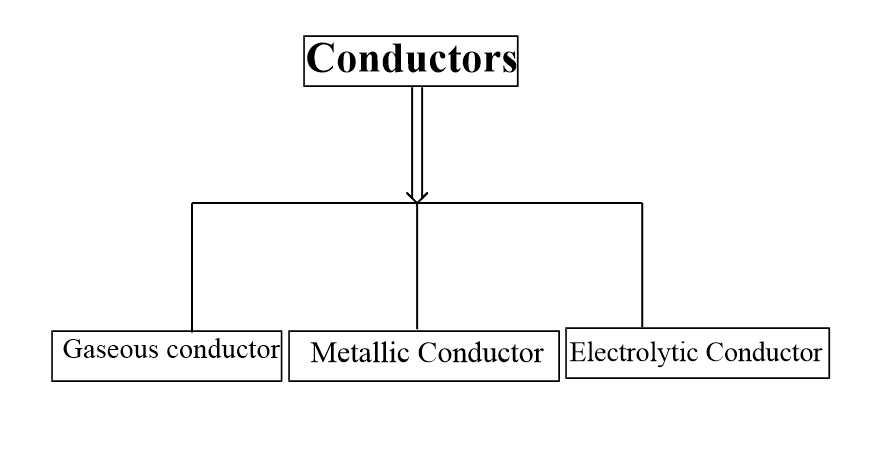Table of Contents
ToggleMetallic conduction and electrolytic conduction, as well as gaseous conduction, are three major types of conduction, which are discussed in detail along with the major difference between metallic and electrolytic conduction.
Conductors
Conductors are the substance that allows the passage of electricity or electric current through them. But all conductors can’t carry the same extent of current. On this basis, conductors are classified as good conductors and bad conductors. Good conductors allow the passage of electricity easily while bad conductors allow the passage of electricity with difficulty. The substance which doesn’t allow conduct electric current are called insulators or non-conductors. For example Wood, Rubber.
Classification of Conductors
In general, conductors are classified into the following three categories viz. Gaseous, metallic, and electrolytic.

Gaseous conductor
The gases conduct an electric current under high potential difference at low pressure or when they are exposed to certain radiation. Under these conditions, the gas undergoes ionization, and these charged particles are responsible for the conduction.
Metallic conductors
The conductors which conduct electric current by transfer of electrons without transfer of matter are called metallic conductors. In these conductors, the charge carrier is the electrons hence these are also called electronic conductance. For example, metals such as Cu, Ag, Pt, etc are the best conductors of electric current.
This mode of conduction decreases with the temperature rise. This is explained as:
The electronic conduction can be explained based on mobile electron cloud diffusing or penetrating a relatively fixed lattice of positive metal ions. When electrons from an external battery are driven into one end of a metal wire, the cloud’s electrons are displaced at the entry point. By pushing neighboring electrons ahead, the displaced electrons gain new locations.
The effect is carried from one end of the wire to the other, where it is returned to the external battery. The rate at which electrons enter one end of the wire equals the rate at which they exit the other. The electrical neutrality of the wire is maintained at all points along its length.
The oscillation of metal ions around their lattice locations causes resistance to current flow in a metal. The mobility of electrons is disrupted by such vibrations, which reduces the current flow. The thermal movements of metal ions increase as the temperature rises, providing additional resistance to current flow. As a result, as the temperature rises, metals become worse conductors.
Electrolytic conductors
Those substances that in an aqueous solution or the molten state, transports electric current through the movement of charged particles or ions are called electrolytic conductors. These are also known as ionic conductors. The ionic conduction or electrolytic conduction increases with an increase in temperature.
Why are electrolytic conductors less conducting in comparison to metallic conductors? It is because ions are heavy in comparison to electrons thus, ions move more slowly than the electrons do. Hence conduction differs between these conductors.
- An aqueous solution of salts, acids, and bases is an example of an ionic conductor.
Difference between metallic and electrolytic conduction
The main difference between metallic and electrolytic conduction is that the electrons are carriers in the case of metallic while the ions are the carrier of current in electrolytic conduction. Similarly, In metallic conduction matter is not transferred while the matter is transferred in electrolytic. Other differences are listed in the following table.
| Metallic conduction | Electrolytic conduction |
| The flow of electricity takes place without the decomposition of substances. | The flow of current takes place by decomposition of substance. |
| Electric current flows by the movement of electrons. | Electric current flows by movements of ions. |
| No chemical changes occur. | Ions are oxidized or reduced |
| It does not involve the transfer of any matter. | It involves the transfer of matter. |
| Resistance increases with temperature increases. | Resistance decreases with the increase in temperature. |
| Faraday’s law is not followed. | Faraday’s law is followed. |
References:
- Arun Bahl, B. S. Bahl & G. D. Tuli, Essentials of Physical Chemistry, S. Chand and Company Ltd., New Delhi, 2012






